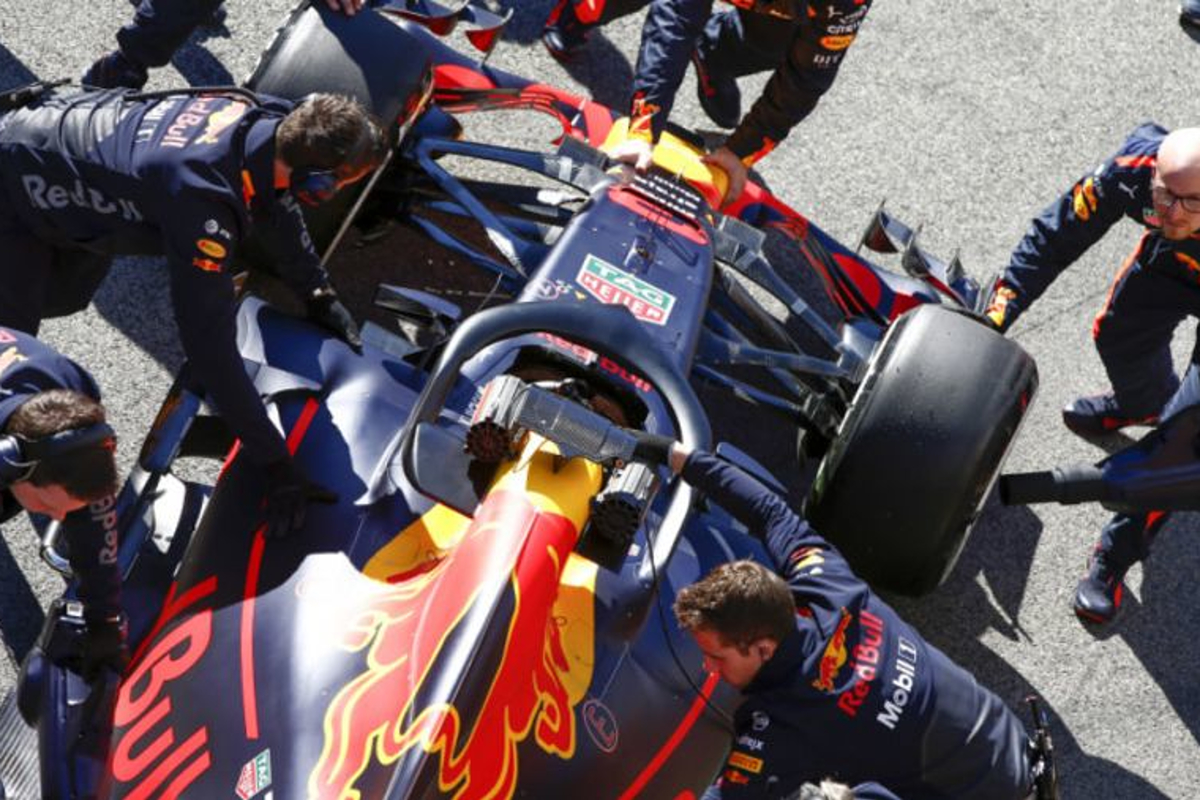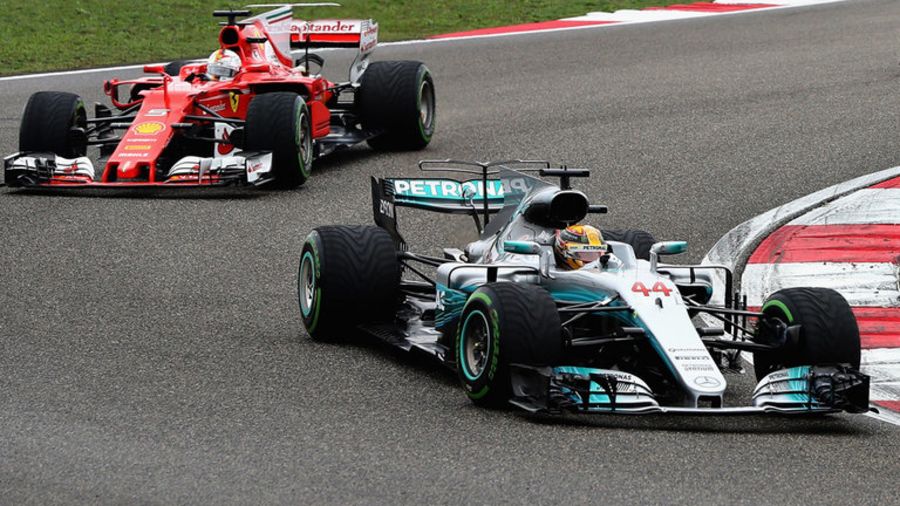
F1 Explained: Why are engines limited? Are the rules different for 2018?
F1 Explained: Why are engines limited? Are the rules different for 2018?

Engine penalties have been a divisive issue in recent seasons, with teams struggling for unreliability in the hybrid era often having races wrecked when they take on new power-unit components. McLaren know about this more than most! But what's the deal with the system? Why do we have it, and what's new for 2018? Here are the answers.
WHAT IS THE ENGINE LIMIT?
F1's rules say: "Each driver is permitted to use only a limited number of power unit elements – of which there are six types – during a single season. The limits are three ICE (internal combustion engine), MGU-H (motor generator unit-heat) and TC (turbocharger), and two ES (energy store), CE (control electronics) and MGU-K (motor generator unit-kinetic). Should a driver use more than this, a grid penalty will be imposed."
WHY ARE THE LIMITS IN PLACE?
Chiefly, to cut the spiralling costs involved in running an F1 team. Mercedes and Ferrari could probably afford to put a new engine in their car every race, but other teams cannot. This also helps level the playing field, somewhat.

WHY ARE THE PENALTIES SO HARSH?
They were under the previous rule set, which added penalties on top of each other. This led to some pretty farcical situations. At the 2017 Italian Grand Prix many teams chose to use penalties tactically, which led to chaos after qualifying.
Sergio Perez qualified 11th, was given a five-place penalty, but started 10th on the grid. Confused? We all were.
Thankfully, it's a bit simpler now...
SO WHAT ARE THE PENALTIES NOW?
Again, from F1: "The first time a driver uses an additional element over and above the prescribed limits, a ten-place grid penalty will be given. If he then uses other additional elements a five-place penalty (or penalties) is imposed. Use yet a further example of any given element and another ten-place penalty is received – and so on."
So, in essence, drivers who need a fourth element in the season will receive a 10-place grid drop. Need a fifth, or more, and it'll be five, unless you're changing more than one component, which will land you a 10-place penalty.
Change your timezone:
Latest News

Chinese Grand Prix Sprint 2024 results: Hamilton gets best result of year as Ferraris CLASH
- 1 hour ago

F1 News Today: FIA investigate F1 star as Ferraris clash at Chinese GP
- 35 minutes ago

F1 Chinese Grand Prix weather forecast - latest today from Shanghai
- 2 hours ago

Hamilton dealt China blow after major FIA decision as Ricciardo given huge Horner warning - GPFans F1 Recap
- Yesterday 23:57

F1 team unveil star-studded lineup in China
- Yesterday 23:12

F1 Qualifying Today: Chinese Grand Prix 2024 start times, schedule and TV
- Yesterday 22:27
F1 Standings

Drivers
- Oliver Bearman
- Charles Leclerc
- Carlos Sainz
- Lando Norris
- Oscar Piastri
- Pierre Gasly
- Esteban Ocon
- Sergio Pérez
- Max Verstappen
- Alexander Albon
- Logan Sargeant
- Lewis Hamilton
- George Russell
- Nico Hülkenberg
- Kevin Magnussen
- Fernando Alonso
- Lance Stroll
- Valtteri Bottas
- Zhou Guanyu
- Daniel Ricciardo
- Yuki Tsunoda
Races
-
 Gulf Air Grand Prix of Bahrain 2024
Gulf Air Grand Prix of Bahrain 2024
-
 Saudi Arabian Grand Prix 2024
Saudi Arabian Grand Prix 2024
-
 Grand Prix of Australia 2024
Grand Prix of Australia 2024
-
 MSC Cruises Grand Prix of Japan 2024
MSC Cruises Grand Prix of Japan 2024
-
 Grand Prix of China 2024
Grand Prix of China 2024
-
 Miami Grand Prix 2024
Miami Grand Prix 2024
-
 Gran Premio dell'Emilia Romagna 2024
Gran Premio dell'Emilia Romagna 2024
-
 Grand Prix of Monaco 2024
Grand Prix of Monaco 2024
-
 Grand Prix du Canada 2024
Grand Prix du Canada 2024
-
 Gran Premio de España 2024
Gran Premio de España 2024
-
 Grand Prix of Austria 2024
Grand Prix of Austria 2024
-
 Grand Prix of Great Britain 2024
Grand Prix of Great Britain 2024
-
 Grand Prix of Hungary 2024
Grand Prix of Hungary 2024
-
 Grand Prix of Belgium 2024
Grand Prix of Belgium 2024
-
 Heineken Dutch Grand Prix 2024
Heineken Dutch Grand Prix 2024
-
 Grand Prix of Italy 2024
Grand Prix of Italy 2024
-
 Grand Prix of Azerbaijan 2024
Grand Prix of Azerbaijan 2024
-
 Grand Prix of Singapore 2024
Grand Prix of Singapore 2024
-
 Grand Prix of the United States 2024
Grand Prix of the United States 2024
-
 Gran Premio de la Ciudad de Mexico 2024
Gran Premio de la Ciudad de Mexico 2024
-
 Grande Prêmio de São Paulo 2024
Grande Prêmio de São Paulo 2024
-
 Heineken Silver Las Vegas Grand Prix 2024
Heineken Silver Las Vegas Grand Prix 2024
-
 Qatar Grand Prix 2024
Qatar Grand Prix 2024
-
 Grand Prix of Abu Dhabi 2024
Grand Prix of Abu Dhabi 2024
About GPFans
GPFans is a multi-platform, multi-language brand dedicated to Formula One coverage. We bring you all the ins and outs of the sport, 24/7, everything from up-to-the-minute news and features to the latest viral stories and clips.We believe that a new generation of exciting, outspoken drivers will make F1 more popular than ever before, and we want to give our users access to as much of their heroes as possible, on and off the track. From Lewis Hamilton to Max Verstappen, Daniel Ricciardo to Sebastian Vettel, we provide in-depth analysis of every every Grand Prix in the season, from Australia to Abu Dhabi.
With Formula One under the new ownership of Liberty Media, how the sport is being covered is evolving, and GPFans will look to be at the heart of this progression into new media, as one of the fastest-growing sites covering the king of motorsports.
Follow us on your favorite social media channel
Corporate & Media
 Innovatieweg 20C
Innovatieweg 20C7007 CD, Doetinchem, Netherlands
+31645516860














 Gulf Air Grand Prix of Bahrain 2024
Gulf Air Grand Prix of Bahrain 2024  Saudi Arabian Grand Prix 2024
Saudi Arabian Grand Prix 2024  Grand Prix of Australia 2024
Grand Prix of Australia 2024  MSC Cruises Grand Prix of Japan 2024
MSC Cruises Grand Prix of Japan 2024  Grand Prix of China 2024
Grand Prix of China 2024  Gran Premio dell'Emilia Romagna 2024
Gran Premio dell'Emilia Romagna 2024  Grand Prix of Monaco 2024
Grand Prix of Monaco 2024  Grand Prix du Canada 2024
Grand Prix du Canada 2024  Gran Premio de España 2024
Gran Premio de España 2024  Grand Prix of Austria 2024
Grand Prix of Austria 2024  Grand Prix of Hungary 2024
Grand Prix of Hungary 2024  Grand Prix of Belgium 2024
Grand Prix of Belgium 2024  Grand Prix of Azerbaijan 2024
Grand Prix of Azerbaijan 2024  Grand Prix of Singapore 2024
Grand Prix of Singapore 2024  Gran Premio de la Ciudad de Mexico 2024
Gran Premio de la Ciudad de Mexico 2024  Grande Prêmio de São Paulo 2024
Grande Prêmio de São Paulo 2024  Qatar Grand Prix 2024
Qatar Grand Prix 2024  Grand Prix of Abu Dhabi 2024
Grand Prix of Abu Dhabi 2024